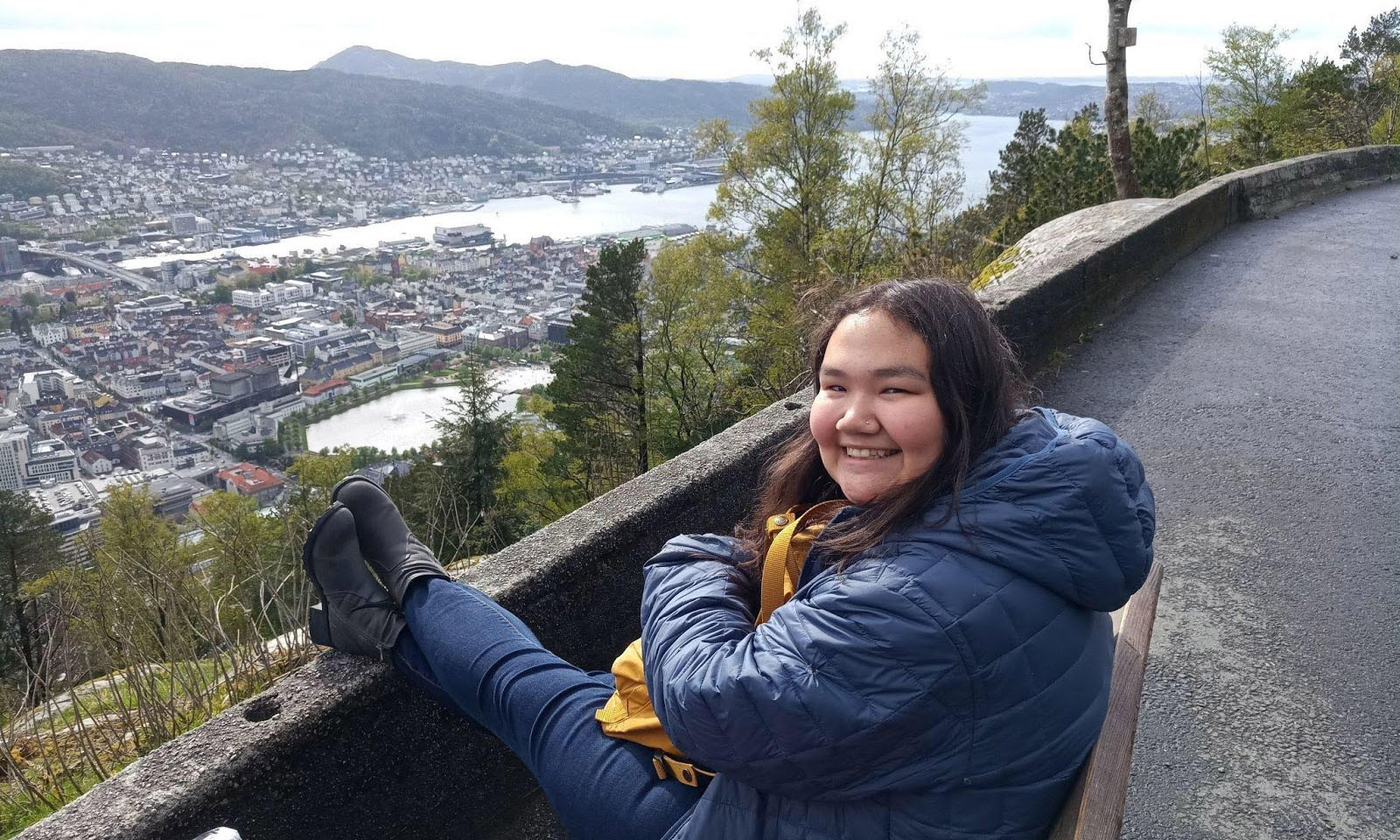Hola from Granada, Spain!
We have had a busy few days! We took a day trip to Sevilla from Córdoba, where we saw the Real Alcazar, or Royal Palace, modeled after Granada’s Alhambra. I loved visiting Sevilla and seeing the Real Alcazar was a great preview to the Alhambra’s power and influence.
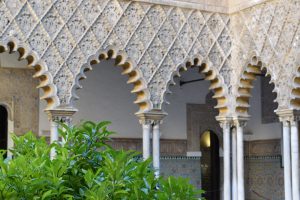
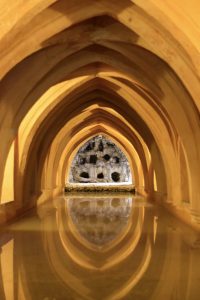
We arrived in Granada 3 days ago, and we have been moving around like crazy! On our first day, we climbed a giant hill to Plaza San Nicolas, where we were able to hear some live music and get a great view of the Alhambra and the Sierra Nevada mountain range behind it. The mountains surrounding Granada were part of the reason that it was so isolated and able to survive as the last Muslim Kingdom in the Iberian Peninsula until 1492.
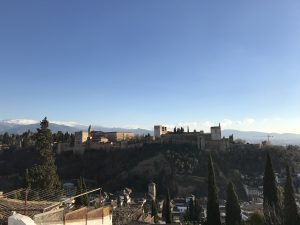
On the second day, we visited the Capilla Real, or Royal Chapel, which is next to the Catedral de Granada. The Capilla Real is where Ferdinand and Isabelle, the Catholic Monarchs who captured Granada are buried. Originally, they wanted to be buried in Sevilla, but after conquering Granada, they decided to move their burial site. The chapel was not even close to completion at the time of their deaths, so they were buried at the Alhambra until the chapel was finished by Carlos, their grandson, who inherited the throne. Juana, the third daughter of the Catholic Monarchs, and her husband Felipe, Carlos’ parents, are also buried in the chapel, along with another grandson of the Monarchs, Miguel, who died when he was three years old. Photos were not allowed in the chapel, but it was incredibly beautiful.
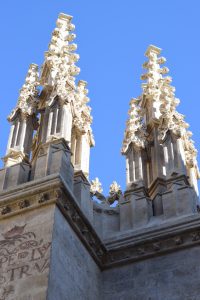
Later in the day, we got to visit the Alhambra! I was so excited to visit, and this site did not let me down! The Alhambra was originally a military fortress that dates back to the 1100s, and this military district of the Alhambra is still standing today. The Nasrid family established their dynasty in Granada after making a deal with Christian rulers: they would help the Christians take Córdoba from the Almohad Muslims, but the Nasrids would get the Kingdom of Granada as a protected area. The Nasrids were Muslim, but did not like the control of the Almohads. The Kingdom of Granada lasted from the 1200s to 1492, when the Catholic Monarch conquered it. They were in an isolated, defensive position, and also paid a tax to the king in order to maintain their protected status. In the end, Granada was weakened as Christian troops closed in. Isabelle felt that she needed to justify her power, and a military victory, especially one over the Muslims, would do just that. Granada also became unable to pay their tax, as it was paid in gold, and they traded silk into Africa for gold, and the silk industry had crashed.
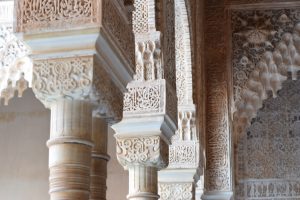
The Alhambra’s construction began in the 1200s and was not completed until several generations later. The splendor of the Alhambra proves that the process was necessary and worth it. The decoration in the Alhambra can be described as “mural poetry.” In Arabic architecture and art, there are three main elements: writing, plant symbols, and geometric designs. The Alhambra features all of these, but writing is especially important. The motto of the Nasrid family is written everywhere in the Alhambra, roughly translated to “There is no victor but God.” I got really good at recognizing this phrase!
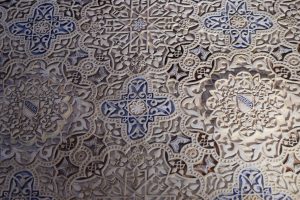
When the Catholic Monarchs captured Granada, the only thing they changed about the Alhambra complex was the building of a cathedral over the Alhama (main) mosque. Later, Carlos built (and did not complete) a palace at the site, after he spent 6 months there on his honeymoon and liked it so much he wanted a palace. This was just one of many projects that Carlos started and did not complete. Carlos was the fifth Holy Roman Emperor, and the first Carlos to rule Spain, so he is seen depicted as both Carlos I and Charles V. I can assure you that this is incredibly confusing to all of us trying to figure out and memorize the history. He wanted to reproduce what Augustus was able to do at the beginning of the Common Era, when he ushered in the Pax Romana, however, Carlos spent a lot of time fighting while he was in power, so he didn’t quite achieve his goal.

The Catholics did not alter the Alhambra, despite it being very distinctly Muslim, and of their enemies. Arabic art and architecture had been in style for many years, and it still was. The Catholic Monarchs realized the luxury and style that the Alhambra offered, and despite having Arabic writing all over it, they did not change this. The Catholics wanted to unite society under one religion to create more legitimacy as rulers and have a stronger bond of loyalty with their citizens. However, the Arabic style of the Alhambra was also the ultimate prize of capturing the last Muslim Kingdom. At the time, the line between Christianity and Islam was not as clear as it is today. The Catholics saw the motto of the Nasrids and simply translated “Allah” to “God.” This is much different than the attitudes of today, so it can be a little difficult to wrap our minds around!
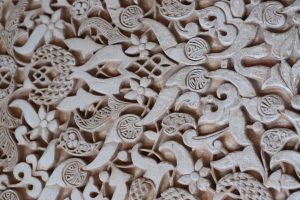
Islamic religious art cannot contain iconography, so we rarely see any sort of images of people or animals in these structures. However, in the Alhambra, the Muslim king had three paintings made that clearly show iconography. These paintings are in his personal space, so the iconography is allowed. They look like Christian paintings, but the people are Islamic. These paintings are great examples of how Christian culture permeated Islamic culture. We know that the Christians loved Islamic art and architecture, but the influences went both ways.
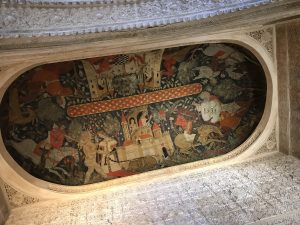
After touring the Alhambra, we visited the Generalife, or Almounya country house. This house was located a bit above the Alhambra on the mountain, and it was a summer retreat for the King. It had gardens and fruit orchards, as well as easy access to the mountain to go hunting. This structure also had a great view of the Alhambra, and was beautiful in its own right!
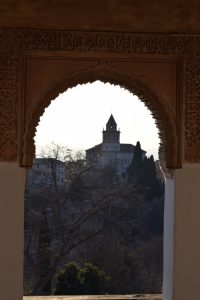
I have really enjoyed visiting all of these important historical sites in Granada. This is our last city in Spain before we travel to Morocco! I am excited to continue our journey as we learn more about the connected history of these two countries.
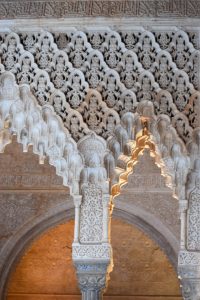
Thank you for following along!
